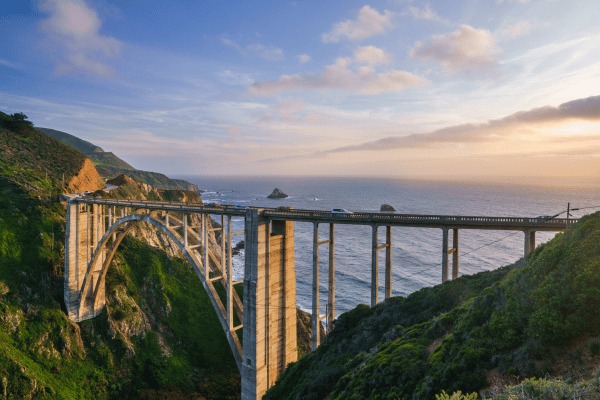Melhorando sua fotografia: Entendendo os sensores Full Frame
Como fotógrafos, aprimorar nossa arte é uma busca contínua. Atualizar nosso equipamento é um passo crucial para elevar nossa fotografia, e uma escolha importante que podemos enfrentar é a transição de um sensor APS-C ou cropado para um sensor full frame.
Neste artigo, vamos mergulhar no mundo dos sensores full frame, explorando suas vantagens e desvantagens para ajudá-lo a tomar uma decisão embasada ao considerar uma atualização. Desde a qualidade da imagem e desempenho em baixa luminosidade até portabilidade e custo, vamos examinar os aspectos essenciais dos sensores full frame e como eles impactam sua fotografia.
I. O que são Sensores Full Frame?
Os sensores full frame possuem um tamanho físico maior em comparação com os sensores cropados, permitindo capturar mais luz e produzir imagens de maior qualidade
Diferente dos sensores cropados, comumente encontrados em câmeras de nível básico e intermediário, os sensores full frame cobrem todo o quadro de 35mm. Esse tamanho maior permite uma qualidade de imagem superior e maior flexibilidade em diversos cenários de fotografia.
II. Vantagens dos Sensores Full Frame
- Qualidade de Imagem Melhorada: Os pixels maiores nos sensores full frame resultam em uma qualidade de imagem aprimorada, com melhor reprodução de cores, faixa dinâmica e nitidez geral. Os fotógrafos podem esperar imagens com mais detalhes e tons precisos, contribuindo para fotografias visualmente atraentes.
- Desempenho Aprimorado em Baixa Luminosidade: Os sensores full frame se destacam em condições de pouca luz devido ao seu tamanho de pixel maior, que permite captar mais luz. Como resultado, esses sensores produzem imagens mais limpas e detalhadas, mesmo em configurações de ISO mais altas, tornando-os ideais para capturar fotos cativantes em situações de iluminação desafiadoras.
- Profundidade de Campo Reduzida: Uma vantagem distinta dos sensores full frame é sua capacidade de alcançar uma profundidade de campo mais rasa. Com uma área de sensor maior, as câmeras full frame podem criar um belo efeito bokeh e isolar o sujeito, especialmente em fotografia de retratos e close-ups, adicionando um toque profissional ao seu trabalho.
- Fotografia de Grande Angular: Os sensores full frame eliminam o fator de corte presente em câmeras com sensores menores, permitindo que os fotógrafos usem lentes grande-angulares em todo seu potencial. Esse recurso possibilita capturar paisagens amplas e arquitetura com detalhes notáveis, aprimorando sua visão criativa.
III. Considerações e Desvantagens
- Fatores de Custo: Uma das principais desvantagens dos sensores full frame é o preço mais elevado em comparação com alternativas de sensores cropados. Câmeras e lentes full frame geralmente vêm com um custo mais alto, o que pode impactar seu orçamento.
- Tamanho e Peso: Câmeras e lentes full frame tendem a ser maiores e mais pesadas do que suas equivalentes com sensores cropados. Essa diferença no formato pode afetar a portabilidade, especialmente durante viagens e sessões de fotografia prolongadas.
- Compatibilidade de Lentes: A mudança para um sensor full frame pode exigir investimento em lentes compatíveis com full frame, pois certas lentes projetadas para sensores cropados podem não cobrir totalmente a área maior do sensor.
- Difração e Resolução: Em aberturas menores, os sensores full frame podem sofrer difração, o que pode afetar a nitidez da imagem. Para otimizar os benefícios dos sensores full frame, considere o uso de lentes de alta resolução para mitigar esse efeito.
IV. Avaliando Suas Necessidades Fotográficas
- Aplicações Profissionais: Para fotógrafos profissionais, os sensores full frame oferecem qualidade de imagem de ponta e excelente desempenho em baixa luminosidade, tornando-os particularmente adequados para gêneros como fotografia de casamento, retrato e comercial.
- Exploração Criativa: Os sensores full frame abrem novas possibilidades criativas, permitindo maior controle sobre a profundidade de campo e a qualidade da imagem. Aproveite esse recurso para experimentar e elevar sua fotografia a novos patamares.
- Fotografia de Viagem e Estilo de Vida: Se portabilidade e peso são considerações importantes para o seu estilo fotográfico, considere câmeras sem espelho (mirrorless) full frame compactas, que resolvem essas preocupações sem comprometer a qualidade da imagem.
- Orçamento e Investimento: Avalie seu orçamento e compromisso de longo prazo com a fotografia ao considerar uma atualização para full frame. Analise os possíveis benefícios em relação aos seus objetivos e aspirações fotográficas.
Conclusão
A decisão de atualizar para um sensor full frame é significativa e exige uma consideração cuidadosa das vantagens e desvantagens. Embora os sensores full frame ofereçam qualidade de imagem incomparável, melhor desempenho em baixa luminosidade e possibilidades criativas, eles também vêm com custos mais altos e possíveis desafios de portabilidade.
Em última análise, sua escolha deve estar alinhada com suas necessidades fotográficas específicas, aspirações e orçamento. Seja optando por um sensor full frame ou cropado, lembre-se de que a essência da fotografia está em capturar momentos e contar histórias através da sua lente. Abrace sua jornada de crescimento e aprendizado, e continue a explorar o mundo da fotografia com paixão e criatividade.


